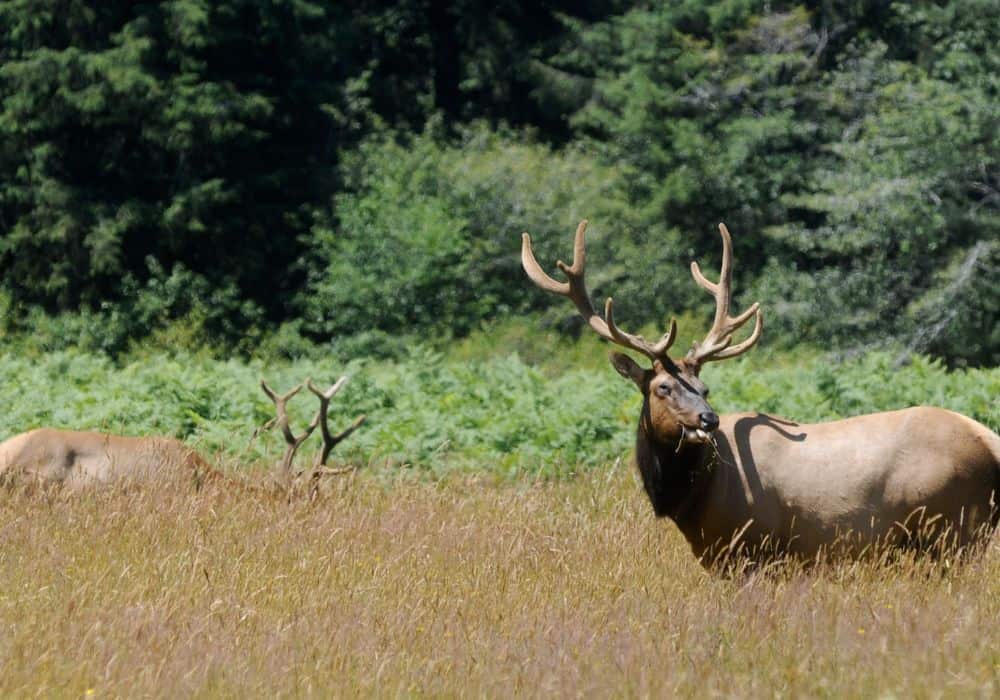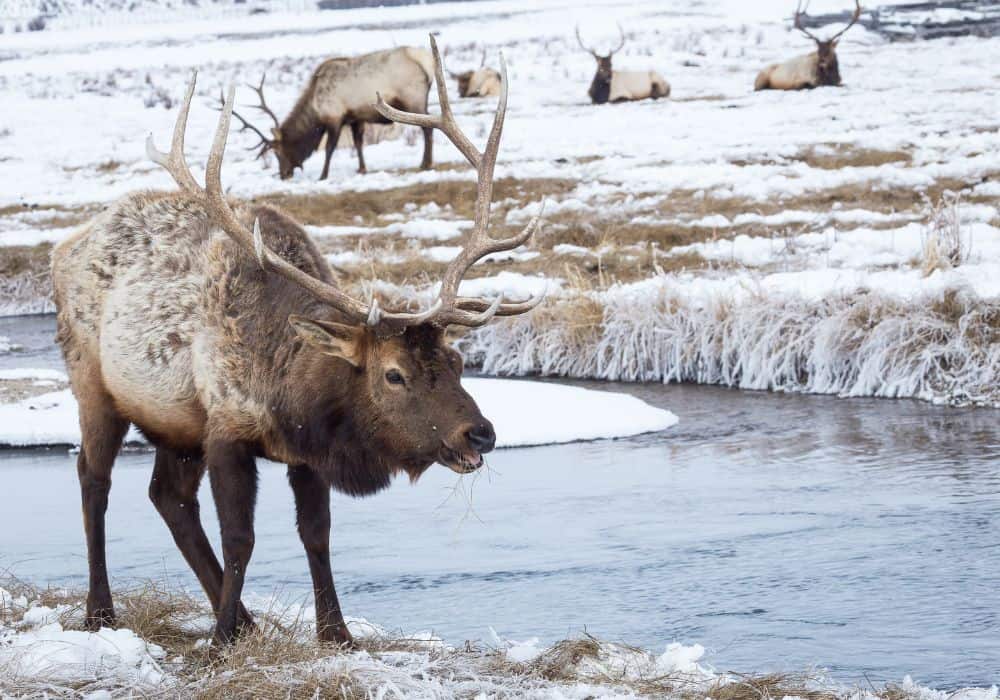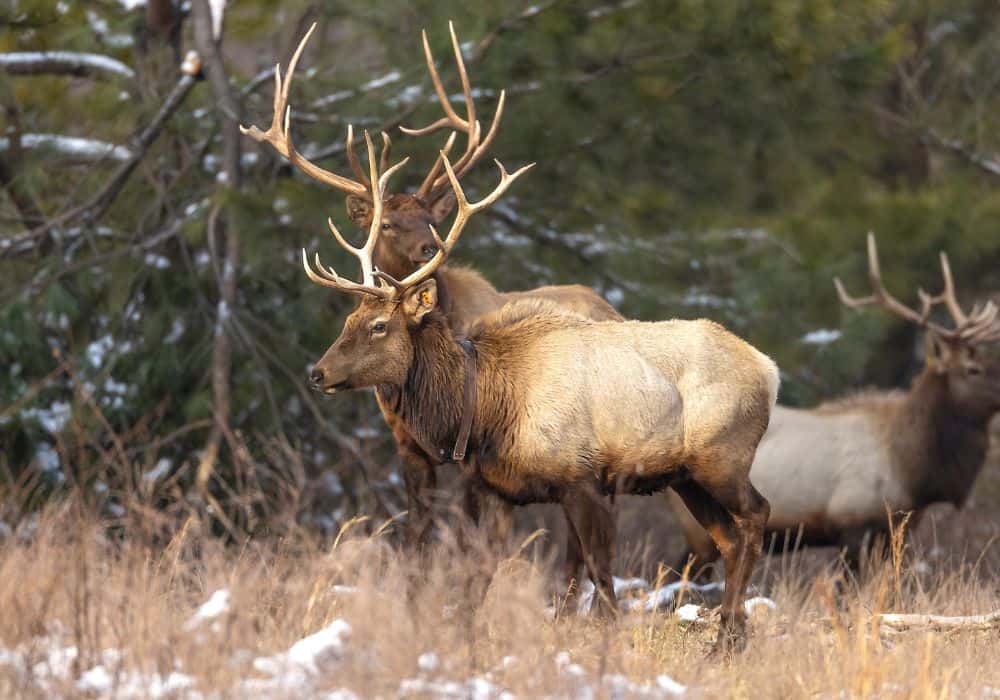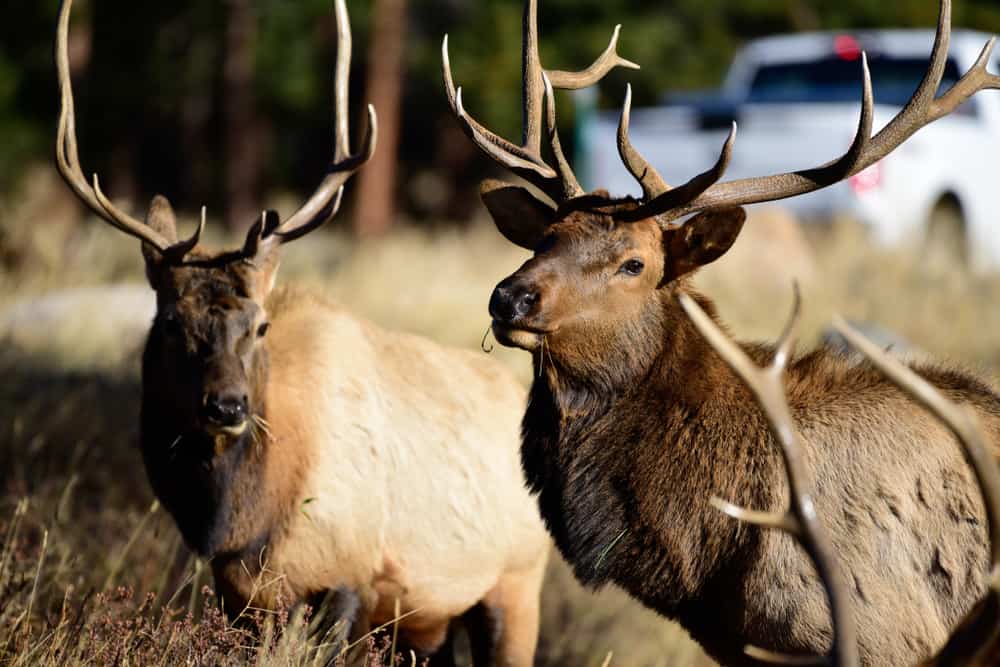Elks are magnificent creatures and members of the deer family, a subgroup of ungulates, which includes mammals with hooves. It is not common to see elk in nature because they avoid encounters with people. If you are interested in seeing wild elk, you might have asked yourself: where do elks live?
In this article, we will explain where elks live so you know where you have the best chance of spotting one. Other than learning about their habitat, you will also find other interesting details about one of the largest subspecies in the deer family.
Distribution of the Elk Population

Once there were millions of elks in North America, but because of hunting and habitat destruction, their numbers were down to below 50,000 just one hundred years ago. Thanks to conservation efforts, the number of elks has increased to roughly one million across the United States and Canada.
Today, you are most likely to see elks in western North America, in particular in Yellowstone National Park. States in the Pacific Northwest, such as Colorado, Montana, and Oregon have the largest American elk populations. However, you can find them as far east as Pennsylvania, North Carolina, and West Virginia.
To increase the number of elks in the US, some states in the country’s east have reintroduced small herds of elk into wilderness areas. Outside North America, you can find elks in parts of Asia.
Elk Habitats
Elks live in forests, edges of forests, and alpine meadows. Because elks are highly adaptable, they can also be found in the semi-deserts of North America. Elks are migratory, meaning they can change their location depending on the time of the year.
In the early summer, elks living in mountainous areas will migrate to grazing grounds in the high mountains at higher elevations. As the winter approaches, the elks will return to the lower valleys where food is more easily available. This video shows you more about where elks go in the winter.
Elks migrate in large herds when they leave the mountain grasslands. However, not all elks migrate if there is less seasonal variety in the climate and a variety of food available all year round.
What Are Elks Like as Species?
Elks are native to North America, which is also home to four other Cervidae species: moose, white-tailed deer, mule deer, and caribou. A male elk is called a bull, a female a cow, and a baby elk a calf. Elks live in large herds, sometimes numbering 400 in a single herd. They do this to protect the young and the weak from predators.
Because of their impressive size, adult elks do not have many predators. However, weaker or lone elks can be killed by mountain lions, bears, or grey wolves. Elk calves can also fall prey to bobcats and coyotes. Elks that reach adulthood can live for 10-13 years.
There Are More Than One Type of Elk Species
While elks may all seem very similar, there are four subspecies and each has its own characteristics.
The Rocky Mountain elk is the most populous type of elk in North America. These elks have the widest range of habitats. The Tule elk is the smallest elk species and is found mainly in California.
Roosevelt elk is the largest elk species. They live in the Northwest of the United States, Alaska, and Western Canada. You can come across the fourth type, the Manitoba elk in the south-eastern parts of Manitoba and Alberta and the southern part of Saskatchewan.
Elk Appearance
An average bull elk is about five feet tall and eight feet long. It weighs around 700 pounds. The male elk’s appearance is made even more impressive by its antlers, which can reach four feet above the head. Female elks are smaller. They measure 4-4.5 feet at the shoulder and are about 6.5 feet long. She weighs 500 pounds on average.
The male elks shed their antlers in the spring and grow them back during the summer. The antlers grow fast, up to one inch per day. This makes the elk’s antlers some of the fastest-growing tissues in nature. The antlers of a mature bull elk usually have six points, called tines. Each tine can be eighteen inches long, sometimes even longer.
As the antlers grow, they are covered in velvet, a vascularized skin that protects the growing antlers. Once the antlers are fully grown, the elks shed the velvet. There are no antlers on female elks.

Elk Calves
Elk calves weigh around 35 pounds when they are born and they can already stand when they are just twenty minutes old. For the first couple of weeks, they live apart from the rest of the herd with their mother after which they join the rest of the herd. The calves are fully weaned at two months but stay with their mother until the next breeding period.
Elk Color and Hair
Both sexes have reddish hair in the summer but in the winter it turns to a lighter, greyer color. The elks have white hind ends, which is why the Shawnee Indians called them Wapiti, meaning white rump. When calves are born, they are spotted but their spots disappear as they grow and are gone by the autumn.
As the winter approaches, the elks’ coats get thicker to protect them against the cold. They also have waterproof hair covering their woolly underfur that insulates the elks from the cold. In the spring, the elks will rub themselves against trees. This helps them to shed excess hair and stay cooler in the summer.
Behavior of Elks
Most of the year, the males and females are in separate elk herds. The herd of female elks is usually led by an older cow as the cows and their young graze away from the bull elks. As the bull calves grow, they begin to spend more time away from the cows. During the winter months, the males and females unite in one herd and forage together.
Despite their large size, elks can move almost silently in the forests and reach speeds of 35 miles per hour. When running, an elk’s stride can be as long as fourteen feet, while at walking speed it is between thirty and sixty inches. Elks are strong swimmers and can cross even larger bodies of water when migrating.
Elks are nocturnal animals, which means their day begins in the late afternoon. At dusk, they will work their way out of the shadows of the woods to feed and water. Near dawn, the elks will return to the more sheltered area to rest throughout the day.

What Elks Eat
Elks are herbivores, meaning they feed on plants. Their main diet consists of grass but they also eat plants, leaves of trees such as oak and aspen, and bark. In the summer, an elk will spend most of its time eating and can consume between ten and fifteen pounds per day.
Like cows and sheep, elks have stomachs with four parts that allow them to consume more food. They can swallow unchewed food that is stored in the stomach’s large chamber. They can store up to fifteen pounds of food, which they regurgitate into their mouths for more thorough chewing before it is swallowed again and digested.
An elk’s teeth are important to its ability to access a range of plant food. Their sharp incisors are used for biting plants and grass and their flat molars to mash the food. Their canine teeth are called ivories, and they might have been tusks in the past. You can tell an elk’s age from its teeth: they grow a new ring each year just like trees do.
Reproduction of Elks
When the mating season, known as the rut, arrives, the male elks will take part in mating rituals. These will include posturing to impress the females as well as the competing males and antler wrestling. The bull elks will also emit loud squeals to establish dominance and attract female elks. This is their bugle call.
An elk bugle call is very distinctive. Often bugling is associated with elks’ adaptation to open areas, including meadows, parklands, and savannas where their mating calls can travel long distances.
During the rut, which lasts for around two months from September, a bull can have around twenty cows in his harem. He will focus much of his time on defending the harem he has collected. It is not uncommon for male elks to lose around 20% of their body weight during this time as they rarely feed while guarding over their cows.
After the rut, the male elks will return to their bachelor herds and the females will gather together, too. The males will now spend most of their time eating to regain the body mass they lost while guarding their cows.

Conclusion
Elks are among the largest members of the deer family and can be found in large numbers in many northwestern states of the US and Canada. They are migratory animals and often move to higher feeding grounds during the summer.
We hope you now have a good understanding of where elks live and other key facts about the species. If you would like to ask us anything about elks, you can write your questions in the comments box.
